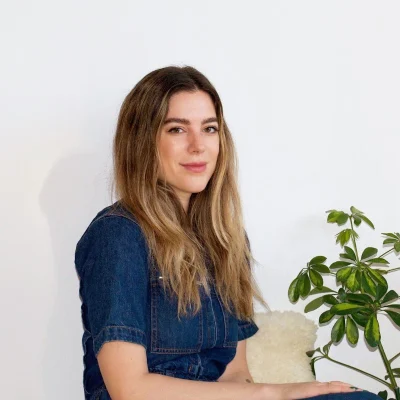LIFE + HABITS
How to Form A Habit: Here’s What it Actually Takes
9 min read
Essential Takeaways
- Forming a new habit (or breaking an old one) is highly personal, so it's hard to nail down a universal timeline or strategy. (It depends on the habit, the person, and other circumstances.)
- That said, researchers have a pretty good framework on how to form a habit and how habit formation unfolds in the brain, by way of a three-step process called the Habit Loop. And understanding the Habit Loop can help guide us towards building better habits.
We’ve all seen the clickbaity headlines and seductive Pinterest fodder. “It takes 21 days to form a habit.” “How to quit smoking in 5 days.” “How to trick your brain into craving the gym.” Thanks to the convergence of media (social and otherwise) and the ever-continuous rise of the self-help industry, it seems as though our collective thinking around habit formation has gone the way of the New Year’s resolution—that is, too aspirational for its own good. (As a reminder, about 80% of resolutions fail within the first 30 days.) (1)
So let’s talk truths, shall we? As attractive as life-hacking your way to better habits sounds, in reality, we need to understand that there’s not really a fast-track solution, nor a catchall formula. That’s because habit formation is, by nature, a very personal thing—while there’s a general framework for how it all happens in the brain, we’re left to fill in the blanks with our own experience and knowledge of what makes us tick. And more often than not, that takes a little trial and error to figure out. That’s why the idea that “it takes 21 days to form new habits!” can be a bit misleading—in reality, the average amount of time hovers around 66 days (according to a study led by Phillipa Lally at the University College London), and can range individually from 18 to 254 depending on the type and scope of the habit. (The same goes for changing a bad habit, by the way.)
If this seems a little disheartening, hear us out: If you think about it, understanding the realities of habit formation is actually kind of a powerful thing. It relieves the unnecessary pressure to stick to a certain timeline, as well as the frustration of being unable to meet it. It’s a reminder that what works for a friend might not work for us, and vice versa. And above all else, it’s an invitation to start slow and small, because that’s more likely to set us up for success in the long term.
But in order to know what it actually takes to form a new habit, first we need to dive into exactly what happens in the brain during that process.
The Habit Loop
The habit loop is the three-part cycle that, with enough time and repetition, illustrates how your brain puts a certain behavior on autopilot—effectively turning it into a habit. A lot of the research around this phenomenon has been spearheaded by Dr. Ann Graybiel at MIT. In the late ‘90s, Graybiel and her team began to connect how factors like behavioral triggers and positive reinforcement help drive habit formation in the brain.*
To get more specific (and scientific) about it, a new or unpracticed behavior starts off in the prefrontal cortex, which is the decision-making part of our brain. That’s why kicking off a new habit can feel like tough work—we’re directly engaging that very active part of our mind. But with enough completions of the habit loop, much of the brain function behind that behavior moves to the basal ganglia, which is responsible for our instinctual behaviors—things like eating, sex and general survival. These are the behaviors we generally don’t have to think about, because they’re second-nature. A habit is formed when the new behavior in question falls under that category—and that’s when it’ll probably start feeling a lot easier.
Picture habit building in 3 steps: Cue, Routine, Reward – the dynamic trio that shapes our habits. First, there’s the cue, a subtle trigger that kicks things off. Next, routine, the habit in action. Finally, savor the reward, our brain’s way of saying, “Well done!”
Let’s break it down a little more:
Cue: Let’s start with the behavior itself. Say you want to get in the habit of taking your vitamins every day. (We might be a little biased but humor us, okay?) Your brain actually needs a reminder to make your multivitamins part of your daily routine; something that acts as a kind of trigger to engage in that habit.
What that looks like is up to you—the point, scientists say, is that it should be consistent (including, ideally, the time of day). It might be as simple as your morning alarm, or a post-it note that says “HEY, YOU: TAKE YOUR VITAMINS.” Pro tip: Research suggests that it’s easier to kick off a habit when you connect it to another, well-established habit or routine—this is called “habit stacking.” (Might we suggest placing your vitamin bottle next to your coffee maker?)
Routine: Next up is “routine,” which is simply engaging in the behavior in response to your chosen cue. The goal is that with enough repetition, this feels like a very automatic reaction.
Reward: Graybiel and her team have found that positive reinforcement is crucial to learning new habits, as it helps drive the changes in the basal ganglia that help facilitate habit formation. In other words, your brain needs a really good reason to return to that behavior. (Willpower only gets us so far before it becomes exhausting, right?)

In the case of something like coffee, that reason is chemical—your body craves the caffeine. But for something a tad more abstract, like committing to working out or—ahem—taking your vitamins, you might need to create more of an emotional tie. This can take a little reflection and in some cases, a lot of patience.
Trial and error allows us to problem-solve as we go and ultimately land on a strategy that will actually work for the long haul.
Maybe you realize, for example, that going to yoga really clears your brain after a stressful day. That’s a pretty compelling habit loop right there: Your crazy, meeting-packed day is your cue, going to yoga is the routine, and feeling more grounded is the reward. For something that’s a little more low-effort, like taking your multivitamins, the satisfaction of doing something good for yourself that day might be enough of a reward. Or, it might even just be the fact that it’s easy—a more recent study out of MIT (led once again by Graybiel and her team) suggests that when we form a habit, the brain factors cost into the reward. In other words: the more convenient, the better. (2)
Either way, the MIT researchers have found that the loop closes itself when, after the brain banks that reward for your behavior, it feels compelled to return to it upon experiencing your cue. And with time and repetition, a habit is born.
The Art of Starting Small When Habit Building
One of the reasons why the rigid timelines we’re used to seeing in the media do such a disservice to authentic habit-building is that they don’t leave room for a margin of error—or, you know, life. Most of us don’t have the time or bandwidth to devote ourselves to establishing a spectacular new habit in a matter of days. We get busy; we miss a day or two (or five); we slip up. But when we free ourselves from a time constraint, it’s much easier to see this “two steps forward, one step back” approach as a very positive thing. Trial and error allows us to problem-solve as we go and ultimately land on a strategy that will actually work for the long haul.
But since science suggests that good habits spark more good habits, starting small—like, really small—is a great strategy to help us get things going and ultimately feel more motivated. Vowing to drink 8 cups of water per day, going on a 20-minute morning walk, taking your multivitamins… these are all low-effort behaviors that can still make you feel pretty great about yourself. And most importantly, these small steps can all ladder up to something much bigger in the future.
References:
1. Luciani, J. Why 80 Percent of New Year’s Resolutions Fail. Retrieved from US News & World Report
2. MIT researcher sheds light on why habits are hard to break. (1999). Retrieved from MIT News
3. Dougherty, E. Wired for Habit. (2015). Retrieved from MIT News
4. Changing one bad habit has a domino effect. (2012). Retrieved from Northwestern Medicine News Center**
Meet Our Expert

Dr. Luke Bucci, PhD, CCN, CNS, Research and Technical Fellow
Dr. Luke Bucci received a PhD in Biomedical Sciences from the University of Texas and has over thirty years of experience in the nutrition industry, encompassing all aspects of scientific applications. He has brought blockbuster products to market, written books, patents and numerous articles, and developed certification programs for clinical nutritionists.
Meet the Author

Victoria Hoff, Writer
Victoria Hoff is an accomplished writer, journalist, and former wellness editor who has covered a wide variety of health, nutrition, and wellness topics during her tenure. She graduated Magna Cum Laude with a Bachelor of Arts from New York University, and after writing for Vogue, Elle, Byrdie, The/Thirty, and more, channeled her editorial skills into a marketing career.